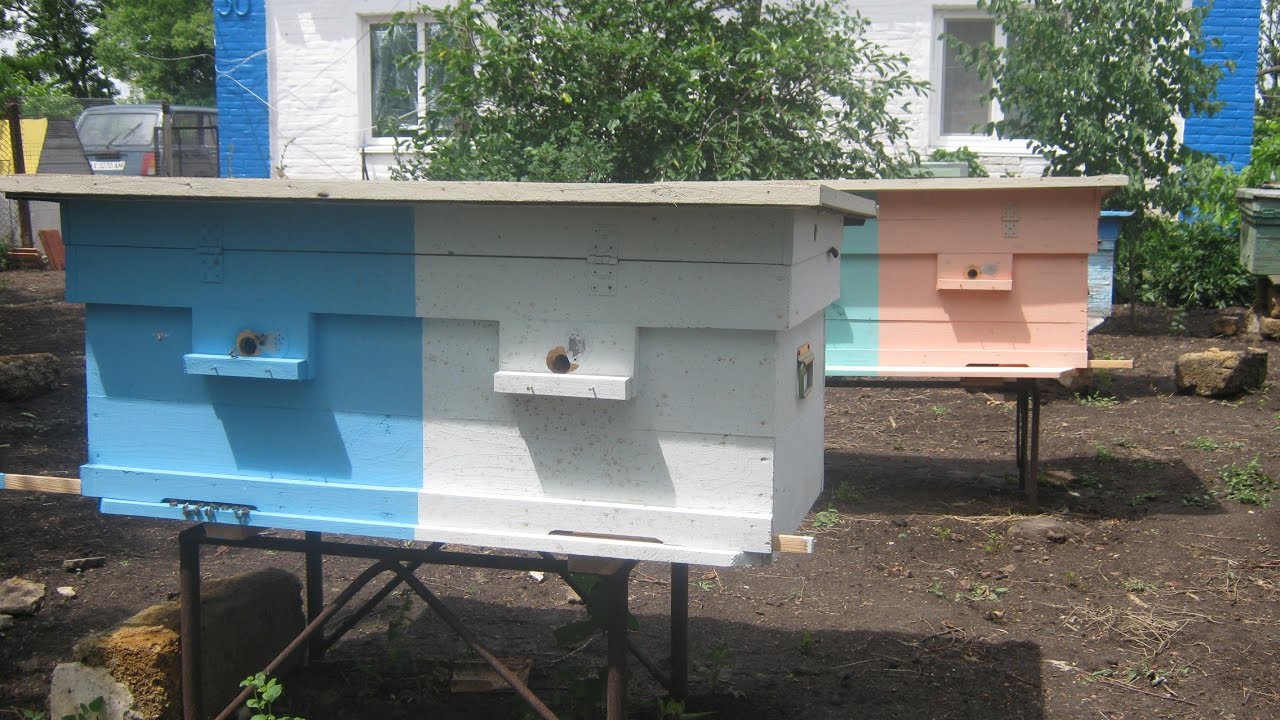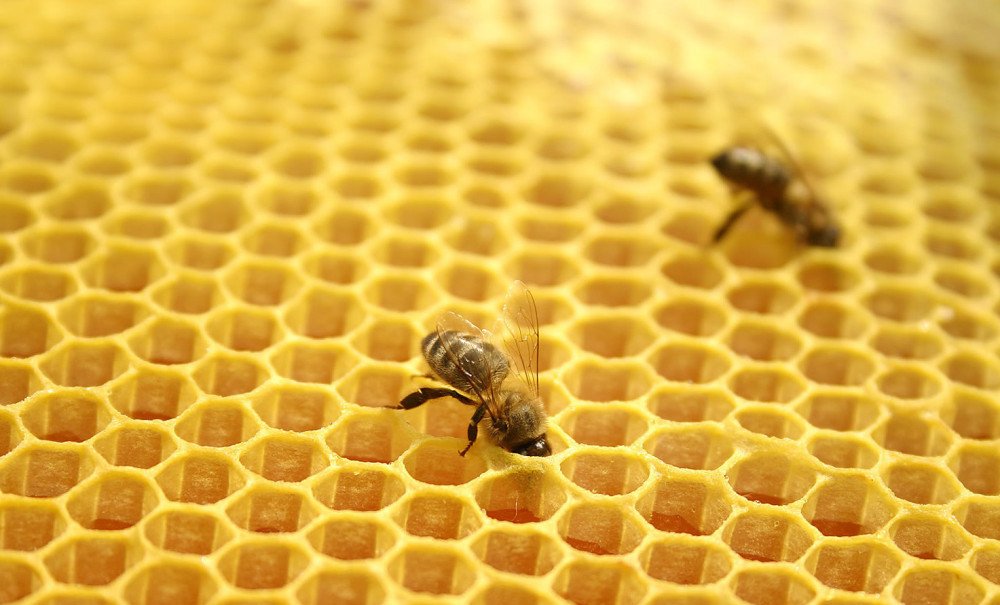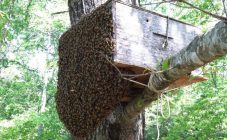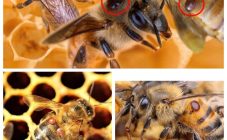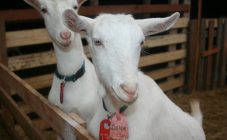Content:
In regions with short, cold summers, the return on an apiary may be much less possible. To increase productivity, you need a large number of strong colonies, and for this the double-queen bee keeping technique is excellent.
Two-queen bee keeping: the essence of the method
Today there are two ways to implement the technique. One of them is called "double-coil" only conditionally. It is used in multi-body hives, forming layering over the main families. Other names for this technique: according to Farrar or according to Gand. In fact, there are more than a dozen methods today (according to Ozerov, Polyakov, Hasanov, etc.). Most of them involve dividing the nest with a lattice, which will not allow queens hostile to each other to meet.
True two-queen beekeeping is sometimes called the Wels method, who discovered it by accident.
In the presence of two queens, there is no secondary family and the main one, they are equivalent, and during the main period of honey collection they become a full-fledged one family.
He began by placing an extra uterus behind a mesh septum as a backup. By chance, one of these queens managed to grow into a quality colony, the worker bees perceived each other as their own, because they had the same smell. They worked without conflict in a common space on the nest during the warm season. In this case, the uterus did not have the opportunity to meet. The results astonished Wels, he got 158 pounds from a twin-uterine nest instead of the 41 pounds that standard single-queen nests yielded. Wels published his methodology in 1892.
Pros:
- Savings on feed during the wintering period.
- Simplified maintenance of required warmth in spring.
- More brood with less cost.
- High activity of the uterus.
- Stronger, hardy, productive family, viable bees, high percentage of flight bees.
Minuses:
- Hives are more difficult to maintain.
- The hives take up more space, are more bulky, and their design is rather complicated, because the bees must be able to freely migrate to both queens.
- The contact between the uteri must be carefully adjusted.
- The risk of swarming is increased; it is very difficult to track the beginning of swarming.
- The volume of brood bodies is small, which is bad for air exchange inside the hive.
But these difficulties were partly bypassed by many practicing beekeepers who proposed their own designs.
To keep bees with two queen cells, vertical multi-hives and horizontal beds are used (16 frames with a perforated frame for two sections). The optimal design is a combined hive that allows you to change the amount of space with the growth of the family.
Double-queen keeping bees in sunbeds
More often than other options, the double-queen bee keeping is carried out precisely in the beds, on which a common body is placed during the main period of honey collection, where bees of two families can contact. The following describes the method and construction developed by Yusuf Hasanov:
- The hive is divided into 2 sections (30 frames-nests, measuring 43.5 * 30 cm).
- For families with queens in the lower section, there are two sections of 8 frames. They are located at the edges. The fourteen frames remaining in the middle are used by the main family.
- There are no partitions in the upper section.
- The roof is removable and has two slopes.
- Breeding begins with the settlement of the lower middle part (14 frames).
- Once it is completely occupied by the bees, it is divided into two parts and each is placed in compartments along the edges.
- The hive is rotated 180 degrees so that the flight bees are evenly distributed over the two sections.
- In an empty colony, without a queen bee, a mature queen bee is added. This sector is marked to know where the younger uterus is.
- The frames with the opened brood are removed from there so that the bees do not establish their own queen cells. Instead, a covered brood is placed from the section where the queen is already present.
- After 1.5 weeks in the middle section it is necessary to create a young family. Frames with opened brood from two side sections are moved to the middle one. They take three pieces - in total, 6 frames are placed in the center. The uterus is taken from the marked compartment (younger). Instead, another, fetal uterus is placed in the extreme sector (or you can take a mature uterus).
- The brood is distributed evenly over the three compartments so that the colonies develop equally.
- As soon as it's time for the main bribe, the ceiling from the central compartment is removed completely, and the side two are covered with a net. An upper, additional body is installed on the hive. During the day, bees can exchange odors.
- On the next day, frames with brood from three already slaughtered sections are placed in the newly installed body.
- The vacated places in the lower part of the hive are filled with waxed frames with food.
- The side sections with the uterus instead of the mesh are covered with plywood with holes.
- In the 2nd building, dry frames are installed.
Thus, three queens actively reproduce during the main flow, the bees feed the larvae, a huge number of workers appear, which fill the frames in the upper body with honey. As soon as they are ready, they are replaced with fresh ones.
Two-queen bee keeping in Dadant hives
The versatile Dadan-Blatt hives are great for breeding bees with two queen bees. It was in such hives that V. Starobogatov practiced, for them his technique was developed. Such hives have 12 frames, a bottom, a body, 2-3 extensions, plug-in boards, a sub-roof and the roof itself. They can be used in two versions: as single-hull and multi-hull. In a two-hull, two extensions are replaced by a second hull. They are no different from the main one, the rest of the details are the same.
Starobogatov worked with 16-frame Dadant-Blatt hives. The peculiarity of Starobogatov's method is that families were united in the fall, before wintering. This was necessary in order to leave a stronger queen for the swarm. Then the beekeeper came to the scheme: a common family only for the period of a bribe (from May 15 to July 15), at other times, including in winter, the families are separated and practically independent, they are separated only by the diaphragm.
Double-queen bee keeping in a multi-hive
This experience was well worked out by D. Tegart, who for 10 years was engaged in double-queen bee breeding in hives consisting of several hives. There were about 1.5 thousand families under his supervision. Each has two queens. Families were raised in packs every year.
The replanting of additional queens at an earlier period did not give the desired effect.The economic benefit was obvious: a twin-uterine hive yielded about 113 kg (an average of 10 years), while a single-uterus hive gave 79 kg.
In detail, the Tegarta system looked like this:
- Beehives - from several buildings, with 10 frames, each with 2 brood boxes, three grates separating the sections, one bottom and one frame feeder, 5 extensions.
- For divorce, non-cellular packages were used, each with one uterus. They were purchased separately in early April.
- Packages were seated in 1 piece. into the hive.
- 3 frames were removed from the middle of the brood bodies. The queen bee was placed there.
- After 1 week - check. If somewhere there is an excessive accumulation of bees, they are moved, in queenless colonies - a queen is planted.
- Syrup feeding is required.
- From May 5 to the middle of the month, the hives are moved to permanent places for the period of the main bribe, the second buildings are installed.
- In the first ten days of June, the bodies with brood are changed in places, a dividing grid is placed. And also put the first extension. In the lower entrance, the frame feeder is replaced by an additional frame with brood.
- A new queen is added in the first half of June to a new brood house. At the same time, the old one moves to the lower case, a dividing grid and two extensions are placed on it. A second body is placed, and a new uterus is placed in it.
Twin-queen beekeeping technology
The technical details depend on the system set up by the beekeeper. Today there are dozens of them. Below is the methodology developed by Starobogatov in the Dadanov hives with the unification of families only for the period of the main summer bribe:
- Before the start of honey collection (until May 15), the weaker non-viable queen is removed, along with the brood (2 frames), so that bimodality can be restored later. The partition is removed, the hive consisting of 2 families turns into a single-family one. In place of the removed frames, three frames with foundation are inserted.
- The hive is made according to the Dadan-Blatt scheme. Number of frames - 17 pcs.
- During the bribe period, add 1-2 extensions with half frames.
- The removed queen bees with brood are placed in regular hives with 4 compartments for further queen hatching. Skorobogatov adhered to such a method so as not to exhaust the strength of the main families. Of course, it is advisable to breed queens in full, not miniature families.
- As soon as the honey collection is over, the strongest are selected from the “queens nursery”, they are put back into the double-queen hive.
- In mid-August, the hives are fed with syrup and insulated. This concludes the work.
Double-queen beekeeping system
The two-queen beekeeping system is covered in the literature in such a way that it seems like a huge number of techniques. In their essence, they differ only in nuances. "America was discovered" for a long time, and numerous practitioners add only details to the basic idea. In Russia, Wels's book on the maintenance of hives with two queens was published in 1910.
However, many beekeepers find the twin-queen system as an exotic novelty. There is an explanation for this: two-uterine families are difficult to maintain. In natural conditions, intense competition is accepted between the queens. They fight and one of them kills the other. The task of keeping two queens under one roof is reduced to the optimal organization of space so that the queens are not in contact, but the bee swarm is at the same time one.
Experiments carried out in 1940 in Palestine at the experimental station confirmed that the vertical three-body Ruth hive was the most profitable: 54.6 kg were obtained when two queens were kept in such a hive (38.8 kg were collected in beds with two queens, in single hives - 27 kg of honey).
Ultimately, the design is selected individually.Nothing prevents the beekeeper, based on one of the existing systems, from developing his own schemes, suitable specifically for his capabilities. The main difficulty in double-queen keeping is the organization of the living space for the bees. The queens should not be in contact, but the swarm should remain one.

